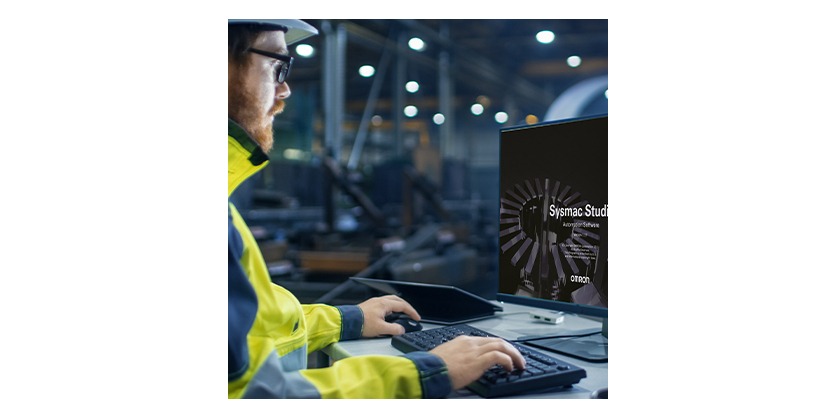Leveraging All-In-One Automation Architecture to Create Robust Artificial Intelligence (AI)
February 22, 2024

The seemingly rapid proliferation of artificial intelligence (AI) in 2023 has sparked excitement and speculation across industries, here Omron explores how all-in-one automation platforms form a solid foundation for implementing AI
The seemingly rapid proliferation of artificial intelligence (AI) in 2023 has sparked excitement and speculation across industries that currently deploy a breadth of automation. Proliferation fueled by great minds and hundreds of billions of dollars harnessing simulated human reasoning to autonomously problem solve. As leaders in the industrial automation field, it is crucial for us to navigate through the hype and focus on leveraging AI to empower our teams to optimize processes intentionally and prepare for future technological advancements in 2024. In this blog, we will explore how all-in-one automation platforms form a solid foundation for implementing AI.
Selecting the Right Processes of AI
AI can be implemented in a breadth of processes. Therefore, it is critical to select a process where the AI can both be deployed successfully and where the success brings a meaningful impact while aligning with the facility’s overall Industry 4.0 strategy. These processes should be cyclic, repeatable, and have consistent results. By quantitatively evaluating key performance indicators and benchmarking against industry standards, facilities can pinpoint areas of strength and weakness. Focusing on critical processes with measurable performance allows for targeted improvements and sets the stage for successful AI integration while fostering further adoption in the future.
Creating a Reservoir of Process-Specific Data
A robust reservoir of process-specific data is crucial for AI to deliver valuable outcomes. This data should be accumulated over a long period of time, well-defined, and include contextual process information. All-in-one platforms can capture both input and output variables which aids in the reinforcement required for successful generative AI self-play training. Furthermore, all-in-one automation platforms play a vital role in collecting and storing this data, ensuring its reliability and accessibility for future AI applications.
Retaining Accountability
While AI can automate decision-making processes, it is important to remember that ultimate accountability lies with facility leadership. AI should be seen as a tool to enhance performance, not as a means to offload accountability. Facilities must remain actively involved in overseeing AI systems and ensuring the result and generative processes align with the facility’s goals, personal values, and intellectual property regulation.
Managing Expectations and Deploying AI
To maximize the benefits of AI, facilities should set clear expectations and milestones for its implementation. This helps calibrate teams and avoids further speculation. It is also advisable to start with small-scale deployments and maintain redundancies in the system to minimize downstream risks. The goal is to create a common language between AI and human operators, fostering a collaborative learning environment where all parties benefit.
The Benefits of All-In-One Automation Platforms
All-in-one automation platforms provide an ideal environment for AI implementation. By integrating data, video, program structure, and ladder logic into a single platform, these systems enable facilities to not only identify specific processes to deploy AI in but also collect holistic data while possessing the network for AI to deploy a remediation at a future time. Of course, these platforms facilitate data visualization and transparency, allowing for better decision-making and scalability before AI is even deployed.
Artificial intelligence holds immense potential for manufacturing facilities, overcoming stalled overall equipment efficiency while leveraging off the shelf hardware to do so. By selecting the right processes, creating a reservoir of process-specific data, and maintaining accountability, facilities can build a solid foundation for AI implementation. All-in-one automation platforms provide the necessary tools and infrastructure to support AI integration and foster a symbiotic relationship between human intelligence and AI capabilities. With careful planning and strategic deployment, facilities can harness the power of AI to achieve long-term success and drive innovation in the manufacturing industry.
More Information
Related Story
All-in-One Automation Platform: Enabling Data-Driven IIoT with Deterministic Motion Control and Cybersecurity
As the industrial internet of things (IIoT) continues to gain momentum, original equipment manufacturers (OEMs) and system integrators (SIs) are faced with the challenge of implementing data collection systems without compromising deterministic motion control or cybersecurity, In this article, Omron explores how all-in-one automation platforms can address these concerns, allowing OEMs and SIs to meet customer demands, achieve cost-effective data harvesting, and avoid hidden manufacturing costs.

